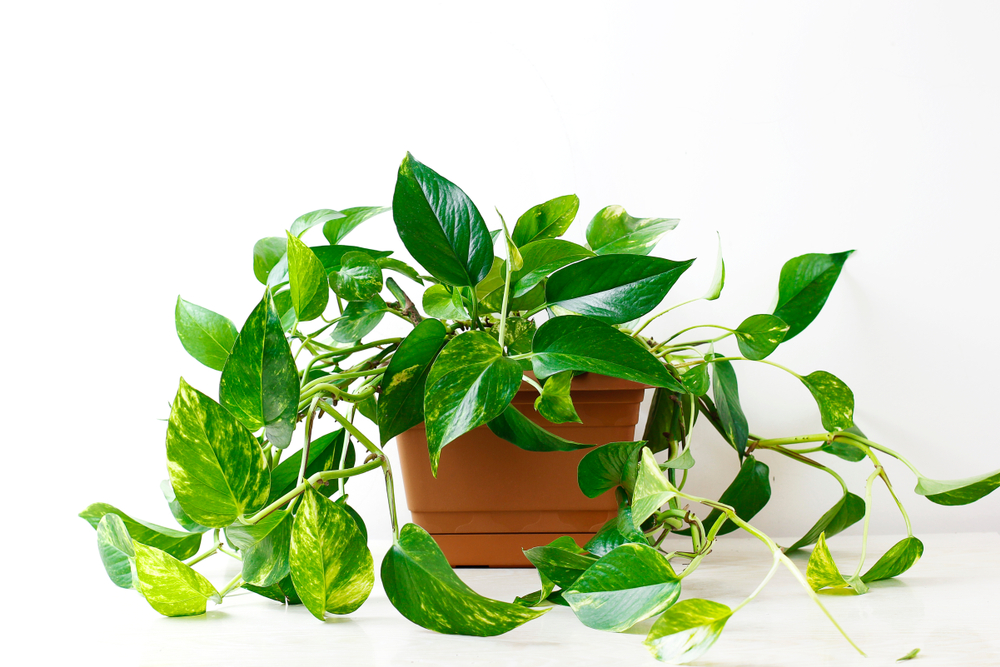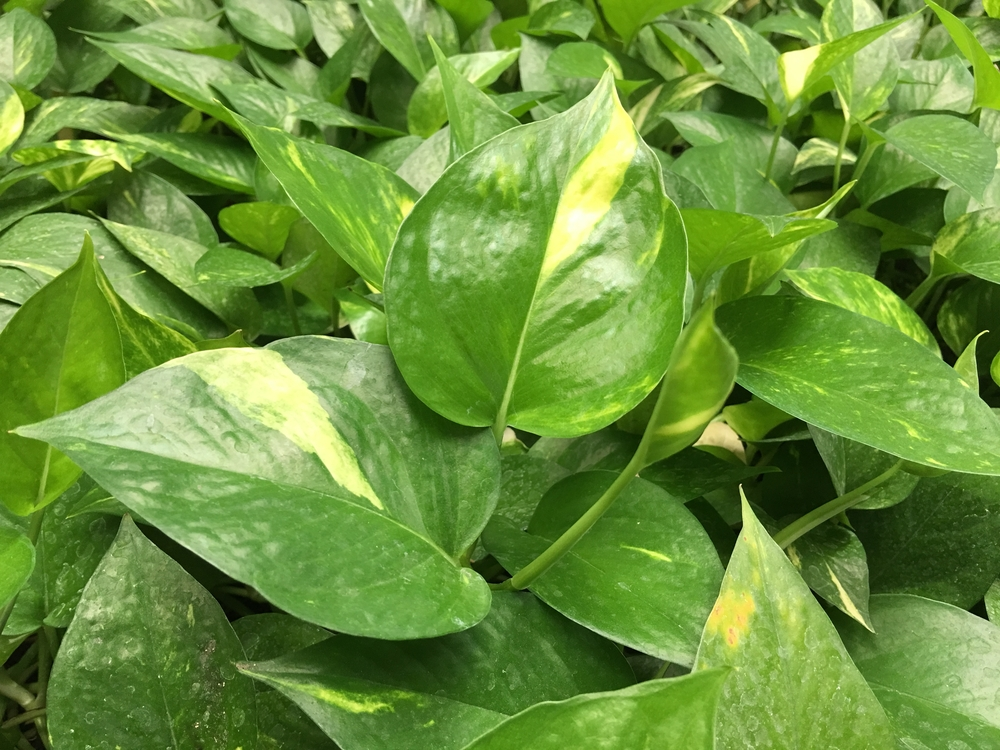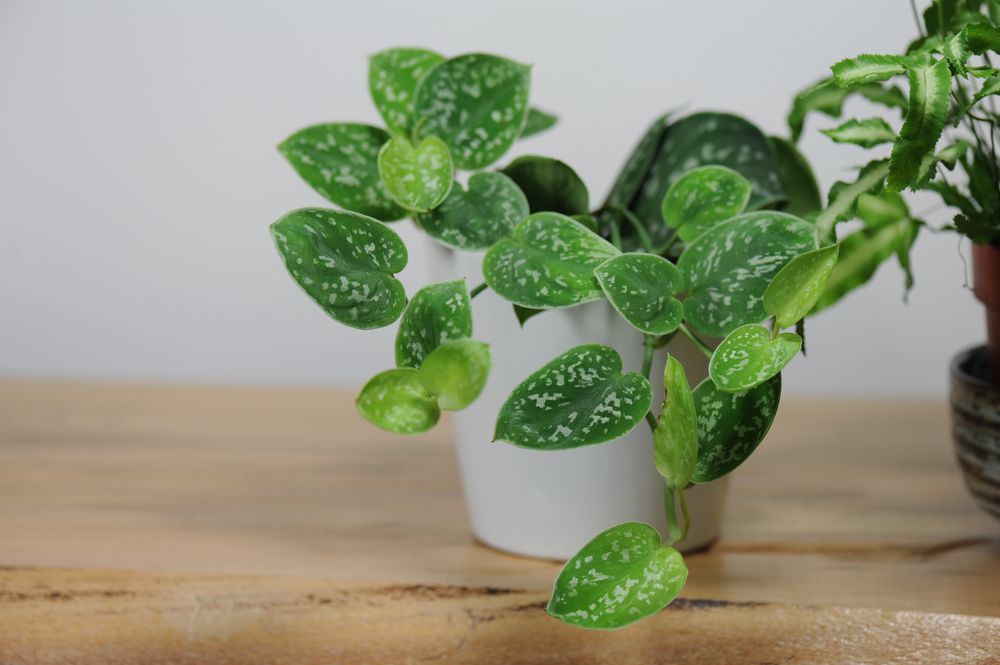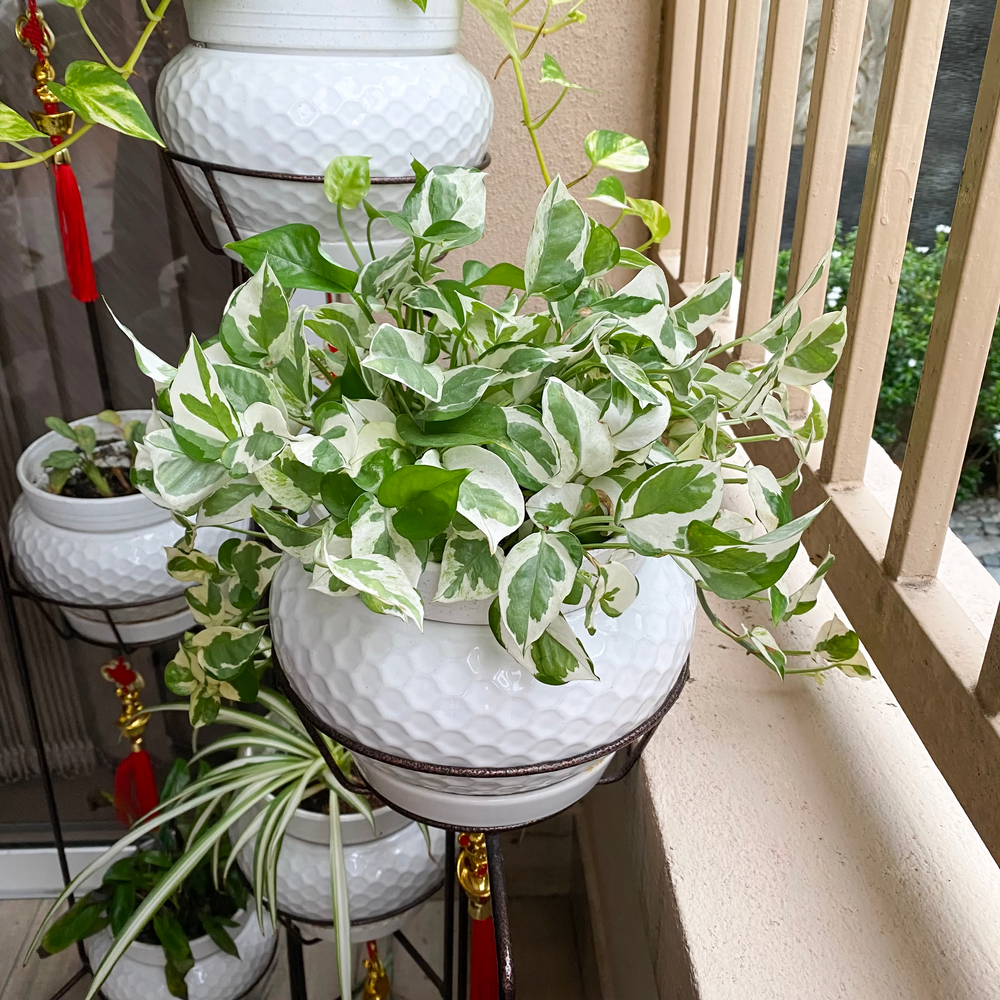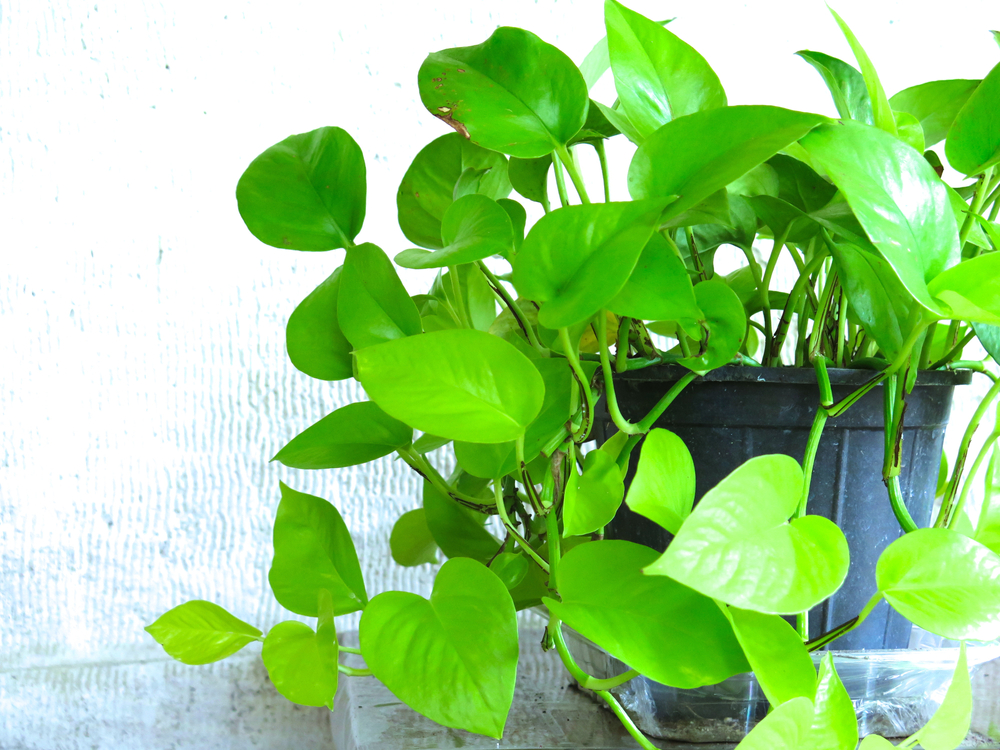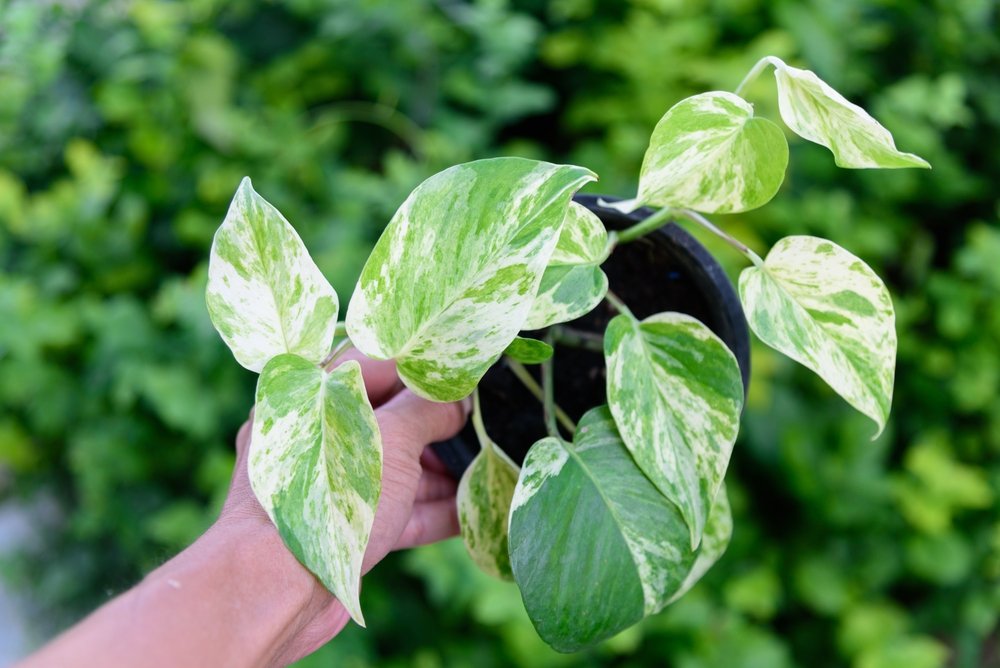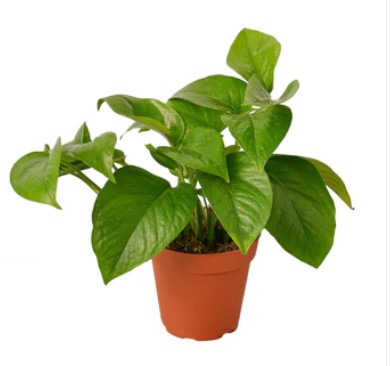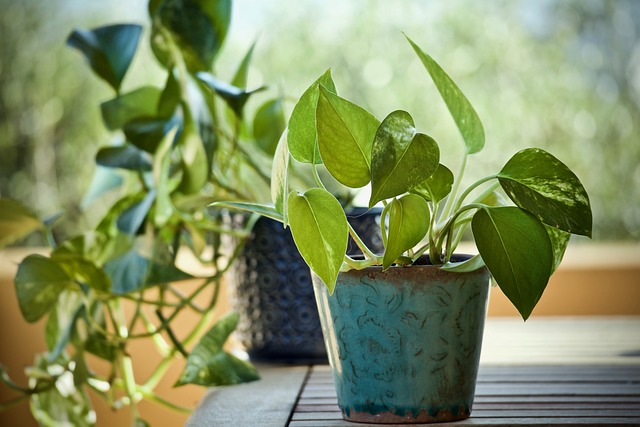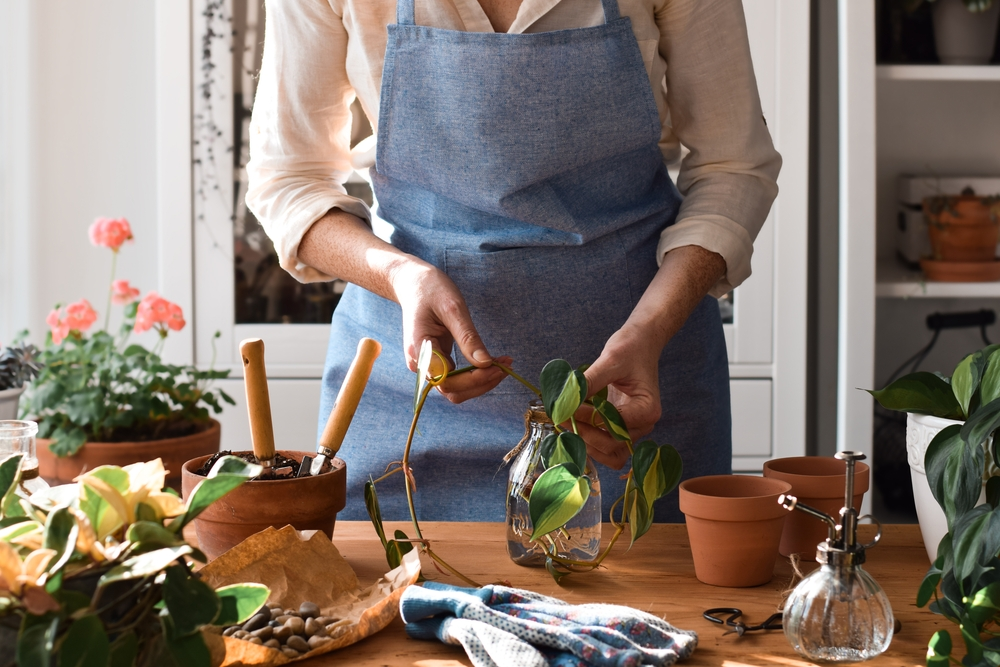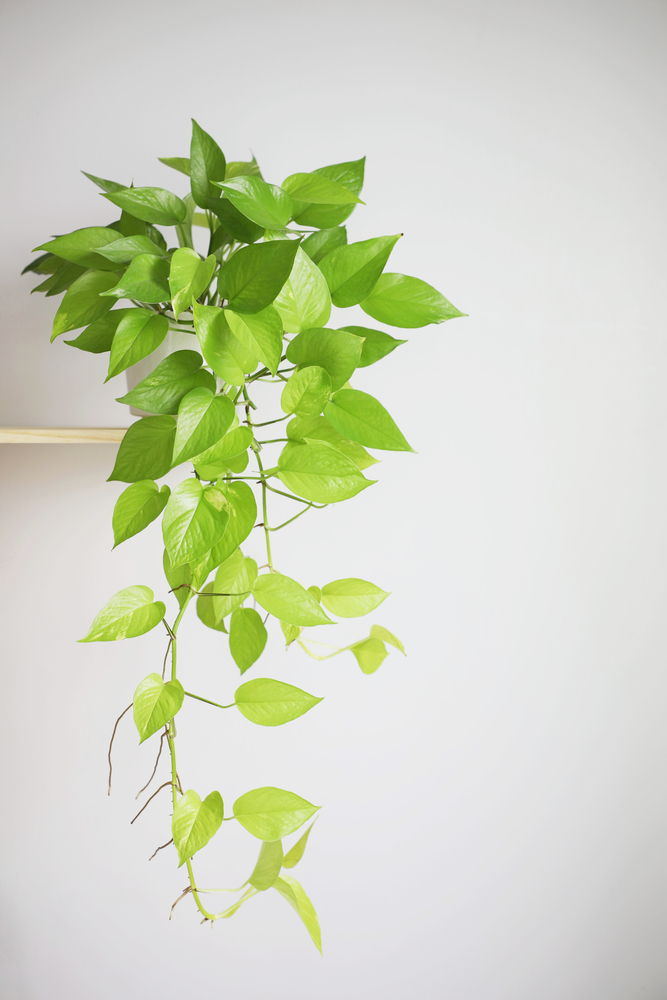HousePlantJoy is supported by our audience. When you purchase through one of our links, we may earn a small affiliate commission. As an Amazon Associate I earn from qualifying purchases. Your cost is not affected.
==================
In the world of indoor plants, a green superstar stands out for its beauty, resilience, and air-purifying prowess. If you haven’t already met this beloved houseplant, let us introduce you to a group of nature’s wonders – six enchanting houseplant varieties, including the renowned Pothos.
Now, you might wonder, “Why should I care about these houseplants?” Well, here’s the secret: houseplants, including Pothos, offer more than just aesthetics. They’re like a breath of fresh air, quite literally. These green companions bring life and color into your home and help purify the air, removing harmful toxins and boosting indoor air quality.
So, join us on this journey as we delve into the world of houseplants, each with its unique charm and personality, ready to transform your living spaces into lush, vibrant havens. Whether you’re a seasoned plant enthusiast or just starting your green adventure, there’s something here for everyone. Let’s explore these green marvels together!
Favorite 6 Pothos Houseplant Varieties for Your Home
Looking for a low maintenance houseplant that is easy to grow, versatile, and beautiful? Check out my favorite pothos houseplant varieties. As an experienced houseplant enthusiast, I’ve always been enchanted by the lush, cascading leaves of the Pothos family. The Pothos, or Epipremnum aureum, is a common houseplant that’s not only visually appealing, but also easy to care for. I’ve found that these plants can instantly bring life into any space, making them a great addition to any home.
Need another reason to consider the Pothos plants? They help remove indoor air pollution! That’s right. Like the spider plant, snake plant, and most of the fern varieties, this beautiful plant also helps to remove indoor air pollution to keep your home healthier!
Pothos, also known as devil’s ivy, is a trailing vine that can adapt to almost any environment. It can grow in low light, high light, water, soil, or even air. It can also purify the air and remove toxins from your home. Pothos comes in many different varieties, each with its own unique color, pattern, and shape. In this article, I will share with you my 6 favorite pothos varieties for your home and how to care for them. Whether you want to add some greenery to your living room, bedroom, bathroom, or kitchen, there is a pothos variety for you.
Introduction to Pothos Houseplants
In this guide, I’ll be sharing my knowledge of six diverse Pothos varieties that you can consider for your living space. Whether you’re a seasoned plant lover or just starting with your green thumb, these Pothos plants are an excellent choice. From the iconic Golden Pothos to the unique Pothos ‘N’joy’, each variety brings something unique to the table.
The Pothos Family: An Overview
The Pothos family is known for its hardy and adaptable nature, making it popular among houseplant enthusiasts. As a family, this group contains many pothos houseplant varieties. These plants are native to the Solomon Islands, but have since spread across the world, thanks to their ability to thrive in a variety of conditions. They’re known for their heart-shaped leaves and trailing stems, which can add a touch of nature to any indoor space.
The Pothos family includes several varieties, each with their own unique look and feel. In this guide, we’ll be focusing on six of these varieties: the Golden Pothos, Satin Pothos, Pothos ‘N’joy’, Neon Pothos, Marble Queen Pothos, and the Green Queen Pothos. Each of these plants has something special to offer, whether it’s a burst of color or a unique leaf pattern.
While these varieties show differences, each make beautiful displays and provide great air filters, too.
Other Names for the Pothos Houseplant Varieties
You might hear the Pothos plants called by other names. They are commonly called devil’s ivy or the money plant.
The name “devil’s ivy” comes from the plant’s ability to thrive in low-light conditions. It also reflects the plant’s poisonous potential for dogs, cats, and other pets.
The name“money plant” is given to pothos in many parts of Asia, where it is believed to bring good luck and prosperity.
Golden Pothos: A Bright Addition to Your Home
The Golden Pothos, commonly called ‘Devil’s Ivy’, is perhaps the most popular variety in the Pothos family. It’s known for its vibrant, heart-shaped leaves that are variegated with yellow or gold. The Golden Pothos is not just aesthetically pleasing, but it’s also incredibly hardy and can tolerate a range of light conditions. This makes it an excellent choice for beginners.
I think of all the Pothos Houseplant Varieties, Golden Pothos might be the most well-known. Many people begin with this variety, then find the others soon after.
In my own home, I’ve found that the Golden Pothos brings a burst of color that can brighten up any space. I’ve also found it to be surprisingly low-maintenance, requiring minimal care compared to other houseplants. If you’re just starting with your plant journey, the Golden Pothos is a great plant to consider.
Satin Pothos: A Luxurious Choice for Plant Lovers
The Satin Pothos, with its silky, heart-shaped leaves, is another great choice for your home. This variety has a unique texture that sets it apart from the others. The leaves are a dark green color, with silver markings that give the plant a luxurious look.
In my experience, the Satin Pothos requires a bit more care than the Golden Pothos, but the extra effort is well worth it. It shares a unique beauty among the other Pothos houseplant varieties.
A Few Extra Things You Need to Do to Keep Your Satin Pothos Happy and Healthy.
- Bright, indirect light: Satin pothos prefers bright, indirect light. Too much direct sunlight can scorch the leaves. Golden Pothos is a bit more tolerant of light changes.
- Humidity: Satin pothos enjoys higher humidity levels than golden pothos. If your home is dry, you can help to increase the humidity by grouping your plants together, placing them on a pebble tray, or using a humidifier.
- Watering: Water your satin pothos when the top inch of soil is dry. Be careful not to overwater, as this can lead to root rot. While this is also true of Golden Pothos, Satin is less tolerant to overwatering.
- Fertilizer: Fertilize your satin pothos every 2-3 months during the spring and summer with a balanced fertilizer. In fact, we tend to fertilize Satin Pothos more lightly than Golden Pothos, overall. It seems to work better for our plants.
The plant’s unique look can add a touch of elegance to any room. Despite its luxurious appearance, the Satin Pothos is still a hardy plant that can tolerate a variety of conditions. Just watch it for signs of stress and manage accordingly.
Pothos 'N'joy': A Unique Variety to Consider
The Pothos 'N'joy' is a unique one of the Pothos Houseplant Varieties that you should definitely consider for your home. This plant has smaller, more compact leaves compared to other Pothos varieties. The leaves are variegated with cream and green, giving the plant a distinctive look.
I’ve found that the Pothos ‘N’joy’ is a great choice if you’re looking for a plant with a unique look. The plant’s compact size also makes it ideal for smaller spaces. Like other Pothos varieties, the ‘N’joy’ is easy to care for, making it a great choice for beginners and experienced plant lovers alike.
Neon Pothos: Bringing a Pop of Color to Your Space
If you’re looking to add a pop of color to your space, the Neon Pothos is the way to go. This Pothos variety is known for its bright, lime-green leaves that can instantly brighten up any room. I’ve found that the Neon Pothos can bring a vibrant touch to any space, making it a great choice for those who want to add a bit of color to their home. That almost iridescent green stands out among the other Pothos houseplant varieties.
Like other Pothos varieties, the Neon Pothos is also easy to care for. It can tolerate a range of light conditions, making it a versatile choice for any home.
Marble Queen Pothos: An Elegant Option for Your Home
The Marble Queen Pothos is an elegant variety that can add a touch of class to your home. This plant has beautiful, heart-shaped leaves that are variegated with green and cream. The Marble Queen Pothos is known for its striking appearance, making it a popular choice among plant lovers.
In my home, I’ve found that the Marble Queen Pothos brings a touch of elegance to any space. The plant’s unique coloration can complement a variety of decor styles, making it a versatile choice for any home.
Green Queen Pothos: A Classic Pick for Pothos Enthusiasts
The Green Queen Pothos is a classic pick for Pothos enthusiasts. This plant has large, heart-shaped leaves that are a vibrant green color. The Green Queen Pothos is a classic variety that can add a touch of nature to any space. Many consider this and Golden Pothos as the most classic of the Pothos houseplant varieties.
In my experience, the Green Queen Pothos is a hardy plant that tolerates a variety of conditions. This makes it a great choice for those who want a low-maintenance plant that still brings a touch of nature to their home.
Pothos Facts: What Makes These Plants Special
The Pothos family is truly special, and not just because of their beautiful appearance. These plants are known for their air-purifying properties, making them a great addition to any home. In fact, they are among the most popular of the air purifying plants.
They’re also incredibly hardy and can tolerate a variety of light conditions. This makes them a great choice for those who are new to houseplants or those who don’t have a lot of natural light in their home.
Another interesting aspect of Pothos plants is their ability to grow in water. This makes them a versatile choice, as they can be grown in a variety of containers and settings. Whether you choose to grow your Pothos in soil or water, you’ll find that these plants are easy to care for and can bring a touch of nature to your home.
Pothos and Air Purification: A Natural Way to Improve Your Home’s Air Quality
One of the things I love about Pothos plants is their ability to purify the air. These plants are known to remove toxins from the air, making them a natural way to improve your home’s air quality. This makes them a great choice for those who want to create a healthier living environment. When considering air purifying plants for your home, choose your favorites of the pothos varieties.
In my home, I’ve found that having Pothos plants can make a noticeable difference in air quality. Not only do these plants purify the air, but they also add a touch of greenery that can bring a sense of calm and tranquility to any space.
Video Credit: @HerbStories
Pothos for Beginners: Tips for Getting Started
If you’re new to houseplants, Pothos plants are a great place to start. These plants are hardy and adaptable, making them a forgiving choice for beginners. When starting with Pothos, there are a few key tips to keep in mind.
Firstly, these plants prefer well-draining soil, so make sure to choose a pot with drainage holes. Secondly, while Pothos can tolerate a range of light conditions, they prefer indirect light. Too much direct sunlight can cause their leaves to burn. Finally, when watering your Pothos, make sure to let the soil dry out between waterings to prevent root rot.
Pothos Care: Ensuring Your Plant Thrives
Once you’ve chosen your Pothos plant, it’s important to ensure that it thrives. Pothos plants are relatively low-maintenance, but there are a few key care tips to keep in mind.
Firstly, Make Sure to Water Your Pothos Regularly, but Avoid Overwatering.
These plants prefer their soil to be slightly dry, so make sure to let the soil dry out between waterings.
Secondly, While the Pothos Plant Tolerates a Range of Light Conditions, They Prefer Indirect Light.
Pothos is a popular and easy-to-care-for houseplant that can grow in a variety of light conditions. However, to keep your pothos healthy and beautiful, you need to provide it with the right amount and quality of light.
Pothos prefers bright, indirect light, which means that it should receive plenty of natural or artificial light, but not direct sunlight that can burn its leaves. The ideal place for your pothos is near an east-facing window, where it can get some gentle morning sun, or a few feet away from a south- or west-facing window, where it can get filtered light through a sheer curtain.
Lighting Options
You can also use fluorescent lights or grow lights to supplement the natural light, especially in winter or in low-light areas. Pothos needs about 8 to 10 hours of light per day to grow well and maintain its variegation1. If your pothos gets too little light, it may become leggy, pale, or lose its color patterns2. If your pothos gets too much light, it may develop yellow or brown spots on its leaves3.
To avoid these problems, you should monitor your pothos regularly and adjust its position or lighting accordingly. By providing your pothos with the optimal light conditions, you will ensure that it stays healthy and happy for a long time.
Lastly, Pothos Plants Benefit From Regular Feeding.
I recommend feeding your Pothos once a month during the growing season with a balanced houseplant fertilizer.
Seven Fun Facts About the Pothos Houseplant:
- Pothos is native to the Society Islands in the south Pacific Ocean, but has naturalized in tropical forests across the world. It grows up to 40 feet or more in length, climbing up tree trunks and producing huge leaves with holes and slits1.
- It is one of the easiest and most resilient houseplants to grow, tolerating a wide range of light, water, and soil conditions. It is also resistant to most pests and diseases, and can survive for weeks without care234.
- Pothos is considered one of the best indoor plants to purify the air, removing toxins such as formaldehyde, xylene, and benzene. It can also help reduce stress, improve mood, and enhance productivity25.
- It is also known as devil’s ivy, because it is nearly impossible to kill and can become invasive in nature. It can also cause skin irritation or stomach upset if ingested by humans or pets, so it should be kept out of reach of children and animals34.
- Pothos can be propagated easily by stem or leaf cuttings, which can be placed in water or soil to root. It can also produce aerial roots that help it attach to surfaces and absorb moisture and nutrients from the air234.
- It rarely blooms indoors, but it can produce small greenish-white flowers that resemble those of peace lilies. The flowers are actually modified leaves called spathes that surround a spike of tiny true flowers called spadix14.
- Pothos has many different cultivars that vary in leaf color, shape, and size. Some of the most popular ones are Golden Pothos, Marble Queen Pothos, Neon Pothos, Jade Pothos, and N’Joy Pothos234.
Best Containers for These Air Purifying Plants
The best containers for pothos plants are those that have drainage holes at the bottom and are made of materials that do not dry out too quickly or retain too much moisture. According to the web search results from Bing, some of the most suitable containers for pothos plants are:
- Ceramic pots: Ceramic pots are ideal for pothos plants that love water and do not mind having their roots wet sometimes. Ceramic pots can be glazed or unglazed, depending on how fast you want the soil to dry out. Glazed ceramic pots have a layer of lacquer that prevents the soil from losing moisture too quickly, while unglazed ceramic pots allow more air and water to pass through the porous material. Ceramic pots come in various shapes, sizes, colors, and designs, so you can find one that matches your style and preference12.
- Terracotta pots: Terracotta pots are one of the most common and affordable containers for pothos plants. Terracotta pots are made of clay that is baked at high temperatures, making them durable and sturdy. Terracotta pots are porous and breathable, which helps prevent root rot and overwatering. Terracotta pots also have a natural and rustic look that can complement any decor12.
- Plastic pots: Plastic pots are another option for pothos plants, especially if you want to hang them or move them around easily. Plastic pots are lightweight and inexpensive, and they come in many colors and shapes. Plastic pots also retain more moisture than ceramic or terracotta pots, which means you do not have to water them as often. However, plastic pots can also trap excess water and cause soggy soil, so you need to monitor the soil moisture regularly and make sure the drainage holes are not blocked.
Hanging Basket or Plant Stand (Shelf?)
A pothos plant can be grown in either a hanging pot or basket or on a shelf, depending on your preference and space availability. Both options have their advantages and disadvantages, which I will explain below.
- Hanging baskets make a good choice for pothos plants. They allow you to showcase its trailing vines and create a vertical element in your room. A hanging pot also allows more air circulation around the plant, which can prevent fungal diseases and pests. However, a hanging pot or basket may be harder to water and prune, especially if it is hung high or in an inaccessible spot. You also need to make sure that the basket is sturdy enough to support the weight of the plant and the soil, and that it has a drainage hole to prevent waterlogging12.
- A plant stand or a shelf makes a good choice for a pothos plant if you want to keep it within easy reach and control its growth. A stand also gives you more flexibility to move the plant around or change its location according to the light and temperature conditions. However, a stand may limit the length and direction of the vines, which can affect the aesthetic appeal of the plant. You also need to provide some support for the vines, such as a pole, trellis, or stake, to prevent them from drooping or tangling13.
Choose Among the Pothos Houseplant Varieties
Ultimately, the decision of whether to grow a pothos plant in a hanging basket or on a shelf depends on your personal taste and situation. Either way, you can enjoy the beauty and benefits of this easy-care and air-purifying houseplant.
These are some of the best containers for pothos plants, but you can also experiment with other types of containers, such as metal, glass, or wood, as long as they have adequate drainage and suit your plant’s needs. You can also decorate your containers with paint, stickers, or other accessories to make them more attractive and personalized. The most important thing is to choose a container that is comfortable for your pothos plant and pleasing for you.
Choosing the Right Pothos Plant for Your Home
The Pothos family offers a diverse range of plants that can suit any home. Whether you’re looking for a pop of color with the Neon Pothos or a touch of elegance with the Marble Queen Pothos, there’s a Pothos plant for everyone.
Choosing the right Pothos for your home ultimately comes down to your personal preference and the conditions in your home. Regardless of which variety you choose, you’ll find that Pothos plants are a great addition to any space.
So why wait? Start your Pothos journey today and experience the joy of these wonderful plants firsthand!
Frequently Asked Questions
Are Pothos houseplants suitable for beginners?
Absolutely! Pothos are like the friendly neighborhood plant buddies. They’re known for their resilience and low-maintenance nature, making them a fantastic choice for plant newbies. Just give them some light, water when the soil feels dry, and watch them thrive.
How do I choose the right Pothos variety for my home?
Easy peasy! Consider your space and lighting. If you have bright, indirect light, most Pothos varieties will be happy. For low-light areas, go for the hardy Devil’s Ivy (Epipremnum aureum). If you crave unique leaves, opt for the variegated types like the Marble Queen or Golden Pothos.
Can Pothos houseplants really purify the air?
They sure can! Pothos are champs at filtering out common indoor pollutants. Their leaves act like little air scrubbers, removing toxins and increasing oxygen levels. So, while they add beauty to your space, they’re also working behind the scenes to freshen up your indoor air.
Join the Houseplant Joy Community!
Discover captivating content, insightful product reviews, and connect with fellow plant enthusiasts on our social media platforms:
- Facebook: Dive into engaging discussions.
- Instagram: Explore stunning plant photos.
- Pinterest: Find inspiration for your indoor oasis.
- Twitter: Stay updated with the latest in the plant world.
Don’t miss out on the greenery and camaraderie!

